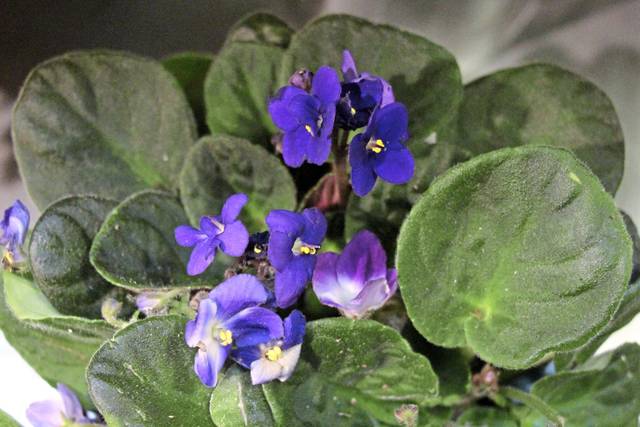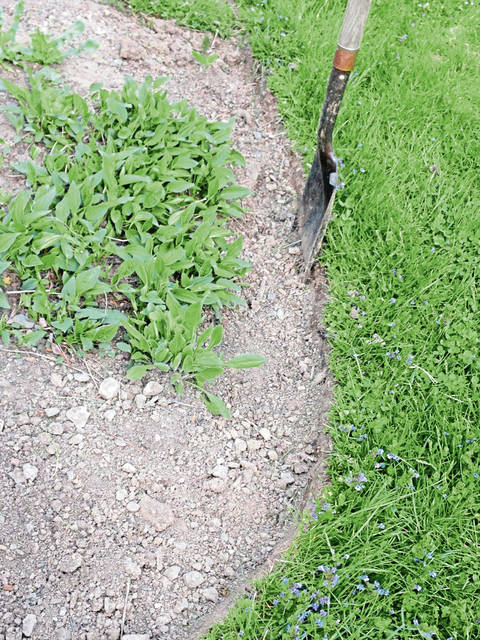Question: I received an African violet for my birthday a few weeks ago. I have it sitting in my kitchen window, but I’m not sure how to take care of it. Can you provide some advice, please?
Answer: African violets are a favorite houseplant for their easy nature and colorful blooms. When they’re happy, African violets produce flowers in many different color combinations, including pinks, purples, lavenders, whites, bicolors and near-reds. The plants are seldom in bloom all the time, but they will produce long-lasting flushes of blooms off and on throughout the year. Interspersed with these bloom times are periods without bloom. Don’t fret when the plant goes out of flower, though. It’s just building up strength to produce future blooms.
To take care of your African violet, choose a location with moderate to bright light. Avoid direct sunlight as overly bright conditions can lead to pale, bleached-out leaves and foliage spots or burn. A sunny, east- or west-facing window is ideal.
If African violets don’t receive enough sun, the plants will be leggy, with limited flowering.
The ideal daytime temperature for African violets is between 70 to 90 degrees F. Nighttime temperatures should be 5 to 10 degrees cooler. African violets do not tolerate cold temperatures or cold drafts.
There are two ways to water African violets: from the top and from the bottom. When watering from the top, move the pot to the sink and carefully pour a narrow stream of water into the soil, being careful to keep the plant’s foliage dry. Let the water flush through the potting soil and drain out the holes in the bottom of the pot. Once the pot has fully drained, put it back into the window.
Many African violet owners prefer to water their plants from the bottom. To water African violets from the bottom, place the pot in a tray of water and allow the water to be absorbed up through the holes in the bottom of the pot and into the soil. After ten or fifteen minutes, drain any excess water from the tray and pot.
Regardless of whether you water your African violets from the top or the bottom, always empty any saucers or trays beneath the plant. Never allow the roots to remain in standing water.
As for the frequency of irrigation, water African violets only when the soil feels dry to the touch and the pot feels light. Over-watering is a more common issue than under-watering.
Feed your African violet with a weak, water-soluble fertilizer every month from March through November. Dilute the fertilizer to half of the recommended strength on the label. This helps to avoid fertilizer salt buildup.
There are hundreds of different varieties of African violets, in a broad range of bloom colors and leaf types. Once you have success with your African violet, consider expanding your collection. Their soft, fuzzy leaves and colorful blooms are tough to resist.
For an extra bit of interest, try growing some of the miniature varieties. These pint-sized selections stand just a few inches tall and have leaves that are no bigger than a dime. In contrast, the large selections are fun, too. Their leaves can be as large as the palm of your hand.








